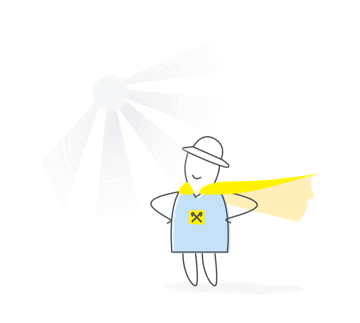Unmanned land transport - a new market segment
If you will not surprise anyone with drones, then unmanned vehicles in Ukraine and the world are still an innovation. The safety and security sector, agricultural sector, transportation, mining - unmanned vehicles for these areas already exist and are being tested. Says Yuri Tikhonov, development manager for the UAV production line of LLC INFOCOM LTD.
Modern development of production in the direction of Industry 4.0. means maximum liberation of a person from hard work. To do this, deploy cyber-physical communication systems of real objects with virtual objects of processing and processes via the Internet, cloud technologies, neural networks, machine vision. And the availability of these technologies makes it possible to develop unmanned vehicles today. According to forecasts, future roads will belong to autonomous electric vehicles. In Ukraine, this trend was also picked up ...
The Zaporizhzhya company INFOCOM LTD LLC is one of the first in Ukraine in the production and testing of real models of unmanned ground transport for various fields, especially for military and civilian transport. “Any vehicle can be converted to unmanned control,” notes Yuri Tikhonov. - Actuators are mounted on the steering wheel, gearbox, cameras around the perimeter of the vehicle, radar and infrared camera. Electronics and software are being installed. ”
First, the Cossacks created and presented at the state level an unmanned vehicle based on KRAZ called "Spartan". Its purpose is protection, patrolling, reconnaissance, mine clearance, cargo delivery, evacuation of people. Such cars can be useful in various sectors of industry for the protection of large areas of enterprises, quarries, plants.
Now, INFOCOM specialists are creating unmanned trucks based on BelAZ for use in difficult mining conditions: they move in autopilot on a given route in a convoy and transport goods without downtime. “The advantages of“ unmanned ”control for a truck are the absence of risk factors for the driver when working in quarries, accurate tracking of the route, updating the route in case of obstacles, fixing the time of arrival at the loading point,” Yuri explains.
For testing are unmanned passenger cars developed at INFOCOM based on the Jeep and Lanos. These are future taxis or private cars with the "autopilot" system, which will help the driver in identifying obstacles, signs, road markings, etc., and eventually replace the driver.
Zaporizhzhya company also developed and tested unmanned vehicles for special services: ambulance, fire truck, car for the Ministry of Emergencies, police, etc.
Relevant for Ukraine is the development of unmanned trains with the "autopilot" system, in particular for the transportation of raw materials through the internal territories of enterprises. An unmanned ground transportation system is designed to transport natural resources over long distances without a train driver. "Robot" performs the function of controlling a locomotive.
Promising in the near future, the use of unmanned vehicles in Ukraine, Yuri Tikhonov calls the agricultural sector. Tractors, combines equipped with the "autopilot" system are able to automatically process the fields and collect, transport the crop. At the same time, unmanned vehicles optimally determine the path of movement, turning radius, are completely independent of the “human factor”, are not distracted by downtime and will not deliver the crop to the wrong place. Unmanned tractors and combines are able to work with an accuracy of 10 cm thanks to the marking system, which are installed in addition to the orientation by the GPS global positioning system.
Unfortunately, in Ukraine, farmers have not yet decided to try this technology. “We are looking for partners among Ukrainian farmers who are ready to try to use unmanned vehicles in their fields,” says Yuri Tikhonov. “Complete equipment for the combine will cost about $ 15,000, but in order to practically show the advantages of unmanned vehicles to farmers and overcome their bias, we are ready to equip the first combine at our own expense.”
On the ground and in the air
They work in Ukraine, including INFOCOM, and on a combination of unmanned aerial vehicle technologies and unmanned ground transport. So, drones can accompany cars, digitizing the terrain online and checking the safety of the road, and serve as a flying label “Flying RFID”.
Unmanned vehicles, in turn, can serve as a control system, a platform for take-off or landing of drones. In agribusiness, drones can create an aerial map of the field and control the operation of unmanned tractors and combines using video surveillance.
Infrastructure is needed
For the mass introduction of unmanned vehicles, a smart infrastructure is needed. This means that roads need to be digitized using databases and geographic information systems. Physical identification of road signs, roads, streets, directions using passive or active radio-frequency RFID tags installed on road markings, reflectors, curbs, road signs, fences is necessary. Roads require equipment Wi-Fi - wireless.
So, the development of unmanned vehicles will give impetus to the development of related businesses: wireless power stations, smart substations Smart Grid, smart factories and cranes, energy storage systems, industrial control systems and the like. Therefore, INFOCOM, in addition to unmanned vehicles, immediately develops the direction of electric charging stations and software for them.
Unfortunately, Ukrainian legislation does not yet allow unmanned vehicles to drive onto public roads. But in the private territory of enterprises, on internal roads or on farm fields, unmanned vehicles can be used today.
NUMERAL
23 million fully autonomous cars will drive on US roads by 2030. (Accenture study with Stevens Institute of Technology)
5 trends of unmanned vehicles
- Commercial transport becomes unmanned faster than private
The use of unmanned technologies for an entrepreneur is more obvious than for an individual owner of a Google mobile: the intensity of operation of equipment increases, downtime decreases, labor productivity increases, and salaries are saved for drivers. Finally, fuel is saved: when a convoy of unmanned trucks moves at high speed, maintaining a distance of several tens of centimeters from each other, by reducing aerodynamic losses, fuel consumption is reduced by 5-7%.
- There will be financial transactions between cars
More than 30 companies in the world are working to ensure that the movement of unmanned vehicles is regulated by the analogy of applying different tariffs in different time zones in the power grid. Each car will have its own digital wallet, and it will automatically pay for the right to travel at rush hour or on one or another road. There is a technology according to which, based on the blockchain, unmanned vehicles will automatically conclude smart contracts along the way and exchange information and payments, thereby optimizing movement and infrastructure load on limited market conditions.
- Electric Vehicle Wireless Chargers
Electricity is becoming wireless, and the transport mobility ecosystem is undergoing radical changes. Robotaxis, as a possible main city transport, will be charged on the go.
- Cars become corporate
Fully autonomous cars will mainly be owned not by individuals, but by automakers, technology companies like Google and Apple, and other service providers, such as car travel services. Unlike individual owners, whose cars usually stand idle most of the time, fleet owners can send autonomous vehicles on trips around the clock, amortizing the cost of ownership. Automakers have already begun experimenting with autonomous car fleets: GM has announced a partnership with Lyft, Uber has announced a partnership with Volvo.
- Revolutionary Auto Insurance Changes
Since the auto insurance industry is predominantly engaged in private car insurance, companies have every reason to worry about future growth and profits. If the number of individual owners decreases, insurance premiums will decrease. And since at least 94% of accidents are related to the human factor, the number and severity of accidents and claims for insurance payments will decrease. And it will also lead to lower insurance premiums, as the pricing of insurance companies.















